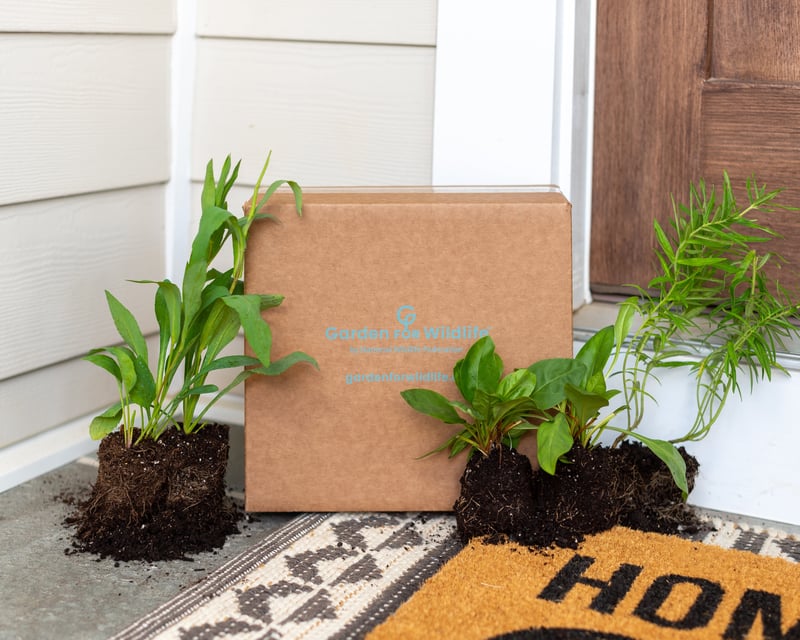
Whether you’re a seasoned plant connoisseur or a green thumb in training, you can be a hero for pollinators.
World Animal Protection has partnered with Garden for Wildlife to help save animals around the world and in our own backyards. Key wildlife species are disappearing at an alarming rate, but by planting native plants, gardeners can create productive and sustainable places for wildlife to thrive. Many native plants host specific wildlife species in relationships that have evolved over thousands of years. Yards and gardens with native plants can expect to see a doubling of wildlife vs. yards that are primarily covered with lawn and ornamental non-native plants. Gardeners, yard owners, and those with balconies have the power to help reverse biodiversity loss.
Garden for Wildlife has removed the guesswork and web searches that you may need to get started. They have already identified a wide range of native plants that best support wildlife. Since most chain garden centers carry little-to-no natives, Garden for Wildlife has developed a network of regional growers to get chemical-free native plants, which are delivered to directly to your doorstep. And when you shop at Garden for Wildlife using this link, 15 percent of your purchase of non-sale items will be donated to World Animal Protection!
Whether you’re a seasoned plant connoisseur or a green thumb in training, you can be a hero for pollinators. Native plants are responsible for supplying 30 percent of native bees the food their young need to survive. Moreover, 90 percent of flowering plants rely on animal pollinators for fertilization, without which these plants cannot reproduce, or form seeds, berries, nuts, and other foods relied on by wildlife and people.
Additionally, native plants do double duty by acting as “natural bird feeders,” supplying caterpillars and other insects, which make up the primary food source for the young of most backyard birds. The North American bird population has declined by almost one-third in the last 50 years. That means three billion fewer birds than in 1970. By gardening for wildlife, you aren’t just creating beauty, you’re joining the effort to restore the populations of vital species.
For those without traditional yards or gardens, there’s good news! Small-scale native plant gardens bloom over multiple seasons providing food and places for wildlife to raise their young. For example, planting milkweed and companion nectar plants helps monarchs thrive, which is important because this species has plummeted in recent decades. While most butterfly species can feed on a variety of host plants, monarch caterpillars can only survive on a diet of milkweed, and there are different species of milkweed for different parts of the country. Planting the right kind of native milkweed is critical to restoring monarch populations. A small-scale wildlife sanctuary on your balcony, deck, or patio can make a huge difference for monarch butterflies and hundreds of other animals each year.
World Animal Protection and Garden for Wildlife are working together to protect wildlife around the globe and in our own neighborhoods. You can learn more about the science behind Garden for Wildlife’s mission by visiting our partnership page or visiting their learning center.
Gardening is a great activity for wildlife enthusiasts of all ages. Looking for other fun activities for the young kids in your life? Check out our Wild Animals Aren’t Pets! activity book featuring puzzles, games, and coloring pages!